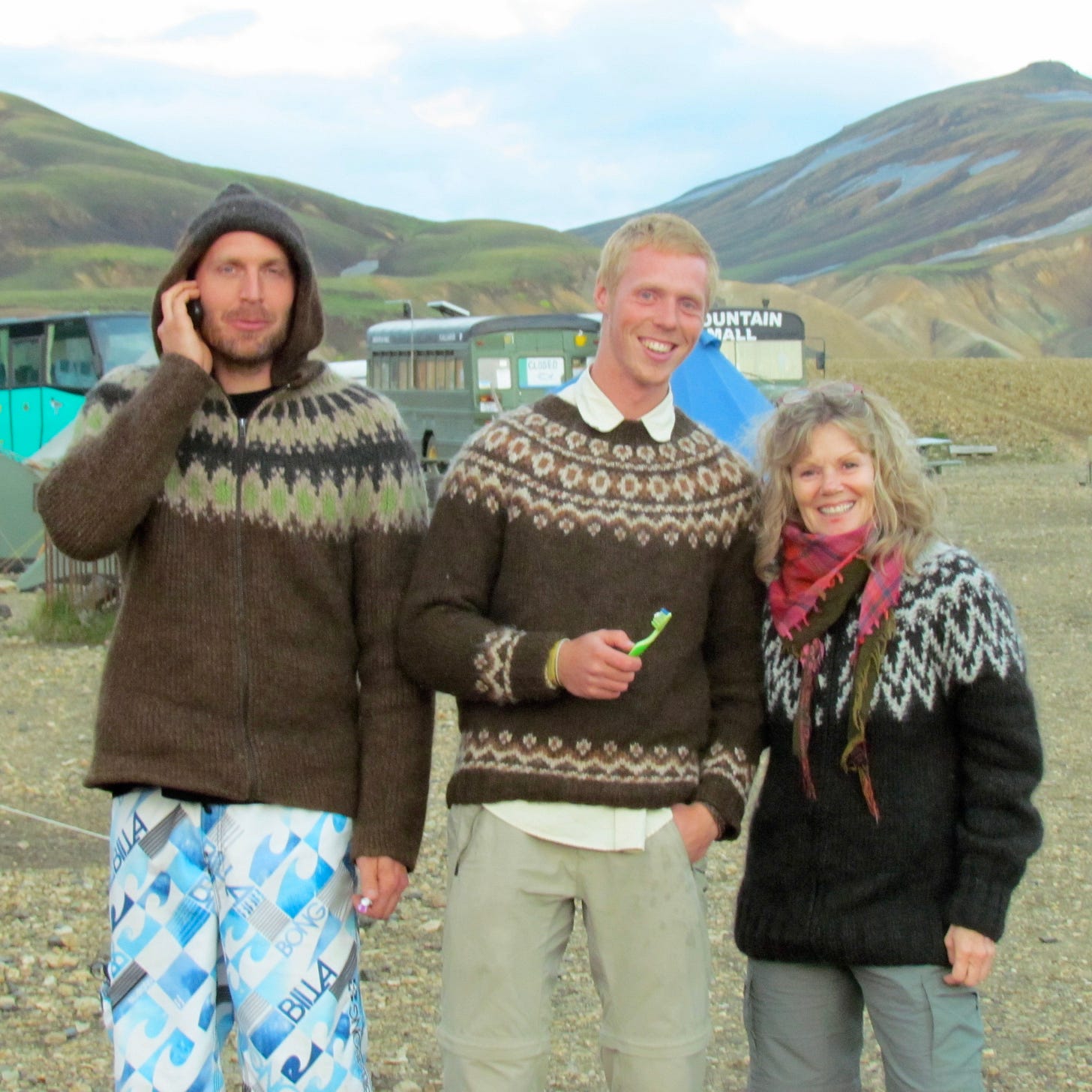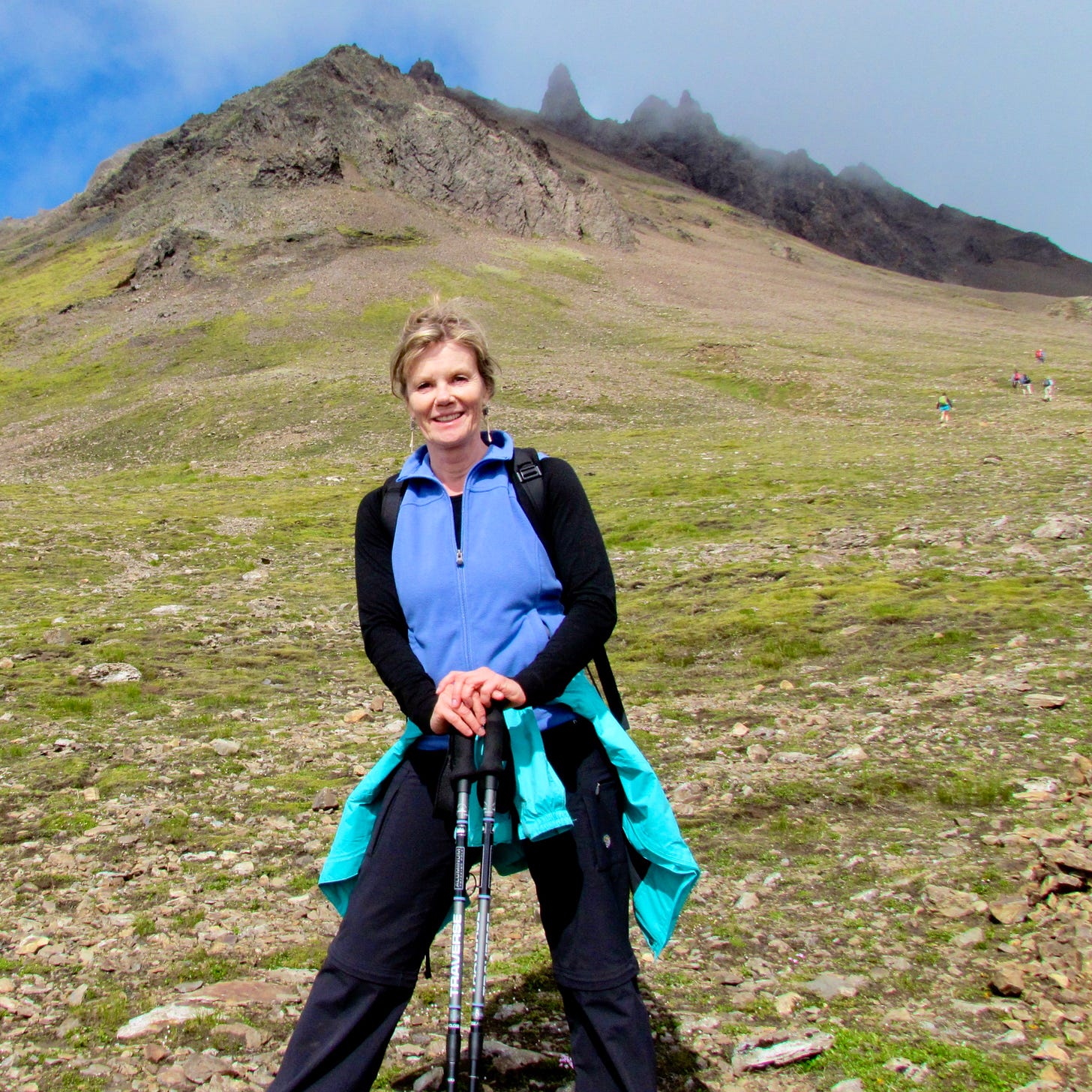As there was nowhere to advertise my work as a self-styled, freelance PBS ‘station wrangler,’ I was completely dependent upon word of mouth. Fortunately, new film projects now came in steadily enough that I could finally relax somewhat about staying afloat and paying the bills.
Despite that, I still had other balance-threatening fears. There was an unseen clock – no less scary for being intangible – ticking in my head. It was the need to outlive my sister, to be older than Karen was when she died. We were ten years apart in age. If I could make it past 52, I thought, then I might be okay and could breathe a little easier. But that silent countdown haunted me until I reached what I’d come to think of as the other side of 52.
Well-intentioned friends often sent me stories and articles about breast cancer. While I appreciated their thoughtfulness, I found the association very stressful. To have my only sister, an amazing tile artist, associated with and remembered, not for her art, but for having died of breast cancer? That was not how I wanted to remember her, nor how I wanted her to be remembered by others.
And the other problem – one I’d not anticipated – was that there was now no older sister to show me what 53 looked like if you had the same genetic combination. Or 54, or 55, and on and on for the rest of my life. There was no one to foreshadow how my hair would look. Did those of us with strawberry blonde hair go grey or straight to white? Did we gain weight after 55? How quickly would our fair Scandinavian skin wrinkle-up? Karen would have shown me but here I was, navigating the future on my own.
When I turned 52 in 2008, I thought I’d be relieved by surpassing that milestone which, in my dark thoughts, looked like a gravestone. But then, there was also my adventurous grandmother, my father’s mother, to worry about. I was writing a book about her and the years she’d lived in Ethiopia. She had died of breast cancer at 57, two years before I was born, and so my focus turned to another gloomy milepost, another tombstone in my mental cemetery of relatives.
In January 2011, while pondering a New Year’s resolution, I remembered the question Howard Hanger had asked that dark Christmas Eve six years ago: What if you were not afraid?
In four months, I would turn 55. And so, I decided to test myself, pushing myself beyond any limits I’d previously experienced. I signed up for a 12-day REI Adventures hiking expedition to Iceland. It would be just extreme enough to feel I was testing my limits without a reasonable expectation of dying in the process. I didn’t know anyone in Iceland or on the trip, and I don’t speak Icelandic. I would definitely not be in control. Of anything.
After signing the paperwork and sending in my deposit, I then spent a ridiculous amount of time worrying that I might not be able to keep up with the others on the trip. I’d spent a week hiking and camping in Yellowstone National Park with my high school boyfriend when I was in my twenties. But that was three decades ago.
And even though I was now hiking regularly in the Blue Ridge Mountains in my mid-fifties, I had visions of twenty-somethings scaling the landscape in athletic leaps and bounds with me slowly trudging through ice and volcanic ash, some distance behind them. What if I ended up a middle-aged den mother to a bunch of adventuring young jocks?
And then, just in time, I remembered – Be not afraid.
The trick was, how not to be afraid? And so began an interesting mental dialog inside my brain as the logical, rational part of me tried to calm the freaked out, irrational part of me by framing the trip as a photography assignment. By appealing to my creative, artistic side, the ruse worked. Which is a good thing, for had I succumbed to my fears, I would have missed ten days of astonishing adventures, sights and new friendships.
A few months before leaving on the trip, I was contacted by John Kaplan, a photographer who’d documented his personal journey with lymphoma in a one-hour film, Not As I Pictured: A Pulitzer Prize-Winning Photographer’s Journey Through Lymphoma.
John was at the top of his game professionally when he was diagnosed with a rare case of potentially deadly lymphoma. Despite his shock, John had the presence of mind to turn his lens on himself. Over time, he created a visual journey that documented his determination and the support he received from his family, musician Philip Anselmo of the heavy metal group, Pantera, and even Mother Teresa. David Bowie donated the use of his iconic song, “Heroes,” for the film’s soundtrack.
This journey was what he wanted to put into my hands. Would I consider representing his documentary, John asked, and help him get it on the air throughout the country? He wanted to use his broadcasts to spread the word that he was giving away free DVDs of his film. It was an incredibly generous offer to help anyone dealing with lymphoma. He wanted to give them hope.
I was scared to watch it. Twelve years after Karen died, I was still worried that what had happened to her would also happen to me. Even though the sculpture class had helped channel some of my sadness into that little pieta, it hadn’t taken away the fear that I, too, would get breast cancer and die too young, just as she had.
I took the film on anyway because I liked John, and he wanted to help others, and because it was a powerful and well told story. And also, because my mantra (when I remembered it) was: Be not afraid.
That summer, I went hiking in Iceland, then came back and got John’s film placed, securing almost fifteen hundred airdates across close to 85% of the US. I emerged from both experiences changed.
A mind-twist had happened while working with John when it dawned on me that what I had before me was actually the story of a survivor. John had had cancer and yet he was still here! John’s film was a huge turning point for me emotionally.
For many reasons, the trip to Iceland was the trip of a lifetime. Each morning began with a new adventure I could never have imagined – soaking in warm thermal waters after long hours of strenuous hiking through a landscape of rainbow-colored peaks; walking along black sand beaches; photographing colonies of puffins; boating through a glacier lagoon; watching a herd of wild Icelandic horses run by; exploring a waterfall rumored to have a chest of gold hidden behind it; camping in the highlands; drinking cold Icelandic beer bathed in the light of a midnight rainbow. These and all the other adventures that filled the more than twenty hours of daylight each day.
Much to my surprise, I was out-hiked every single day, not by twenty-somethings (there were none on the trip) but by a trio of sixty-somethings. How inspiring was that!?
There was also the flat-out exhilaration of being with a group of intrepid souls hiking up and down the slopes of an active volcano – each of us hoping we would be able to make a two-and-a-half-hour descent through fields of snow and razor-sharp lava rocks in a breathtakingly inadequate thirty-minute window, should it happen to erupt which it was actually scheduled to do ‘any day now,’ the seismologists thought.
Even in Iceland, though, films didn’t leave me alone. As if to mess with me, the dirt road through the highlands was unexpectedly closed and our driver had to figure out an alternative route to the base of the mountain through the highland tundra.
It turned Ridley Scott’s production team was there ahead of us, filming the opening to Prometheus.
A post from The North Face outerwear company reminded me of what I had gained from being not afraid – that the truest version of ourselves stands well beyond comfort’s perimeter.
Kristin Fellows is a published writer, world traveler, and a well-seasoned documentary film consultant. When not writing, Kristin can often be found listening to someone’s story or behind the lens of one of her cameras.
More about Kristin @ kristinfellowswriter.com
[photo above: Brushing teeth at base camp with our very cool Icelandic REI guides, Óliver Hilmarsson and Kjartan Þórsson. Photo by Anne-Marie Davidson.
Unfortunately, I can’t recall who took the other photo of me hiking my namesake mountain, Kristinartindar in Skaftafell National Park, Iceland.]






I had the same clock. Dad died at 64 and I worried about making it past that age, since I too have a heart condition. Meg made it past 64 first, and that helped me a lot. I made it past, too. Now our clocks can tick toward our mothers' ages! Bedste made it to 93!
Loved the story and I like the sweaters too! You capture "essence" better than most and you have this talent of telling a story within the story, like looking at a multi-layer cake that I used as the featured photo in my most recent, inane post.
https://garygruber.substack.com/p/take-the-cake
Another thing I admire about you is your determination to keep going when the going gets tough, to keep on staying with the story as it unfolds and pushing through to the other side. Thanks, Kristin.